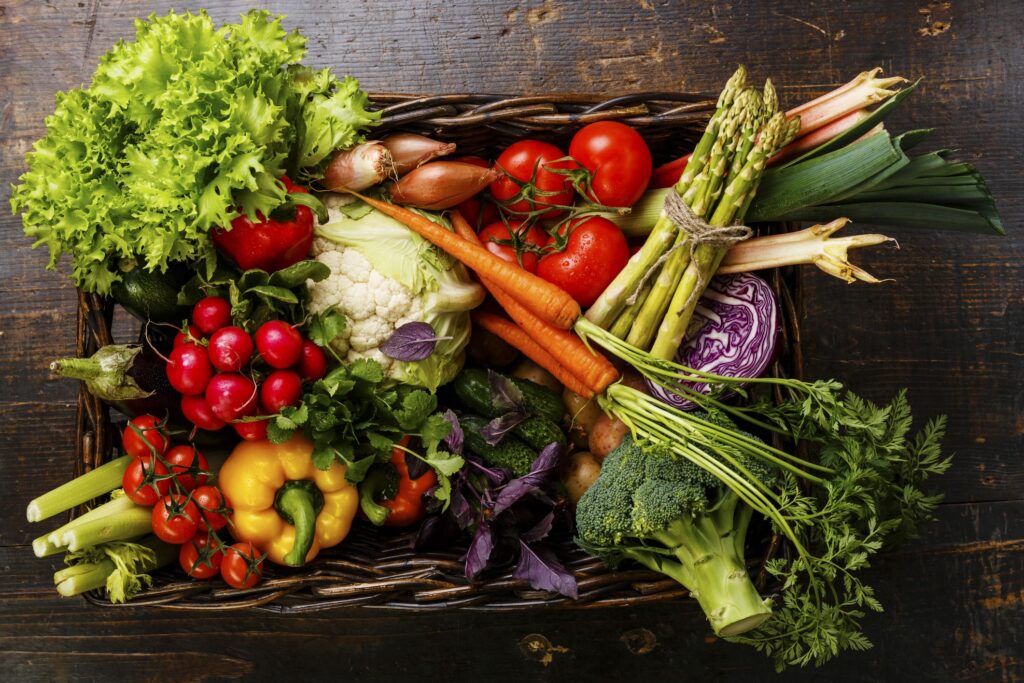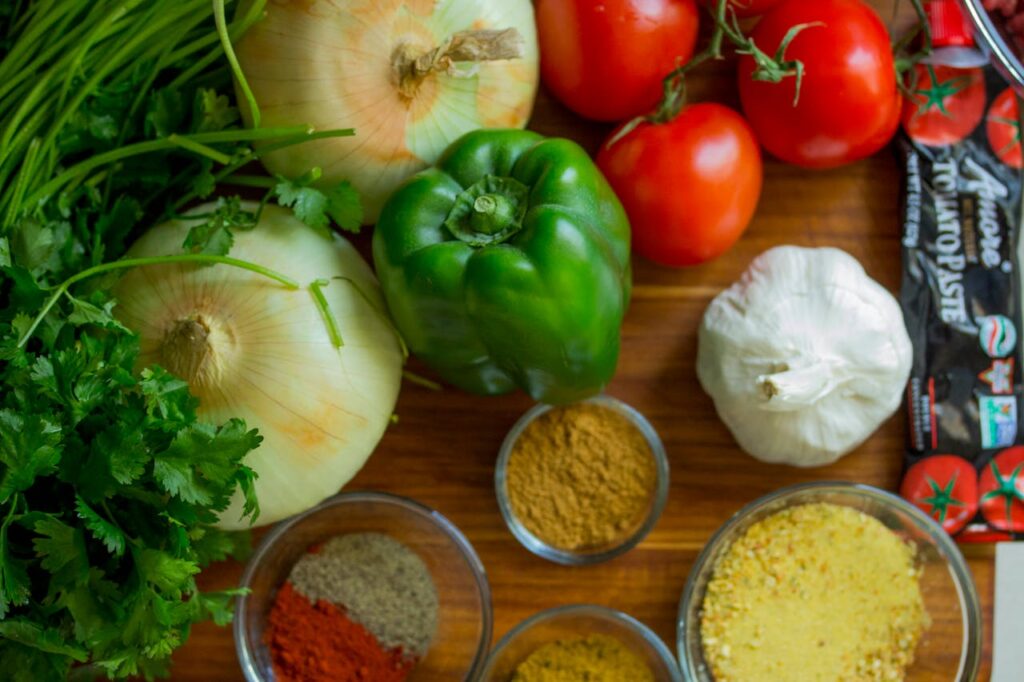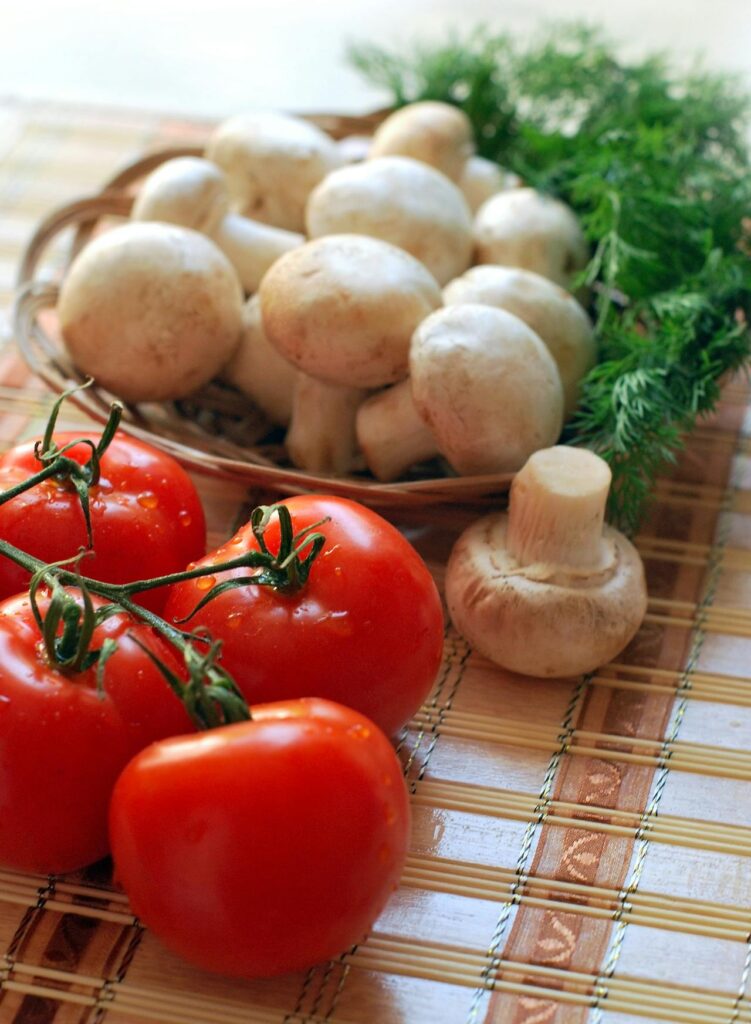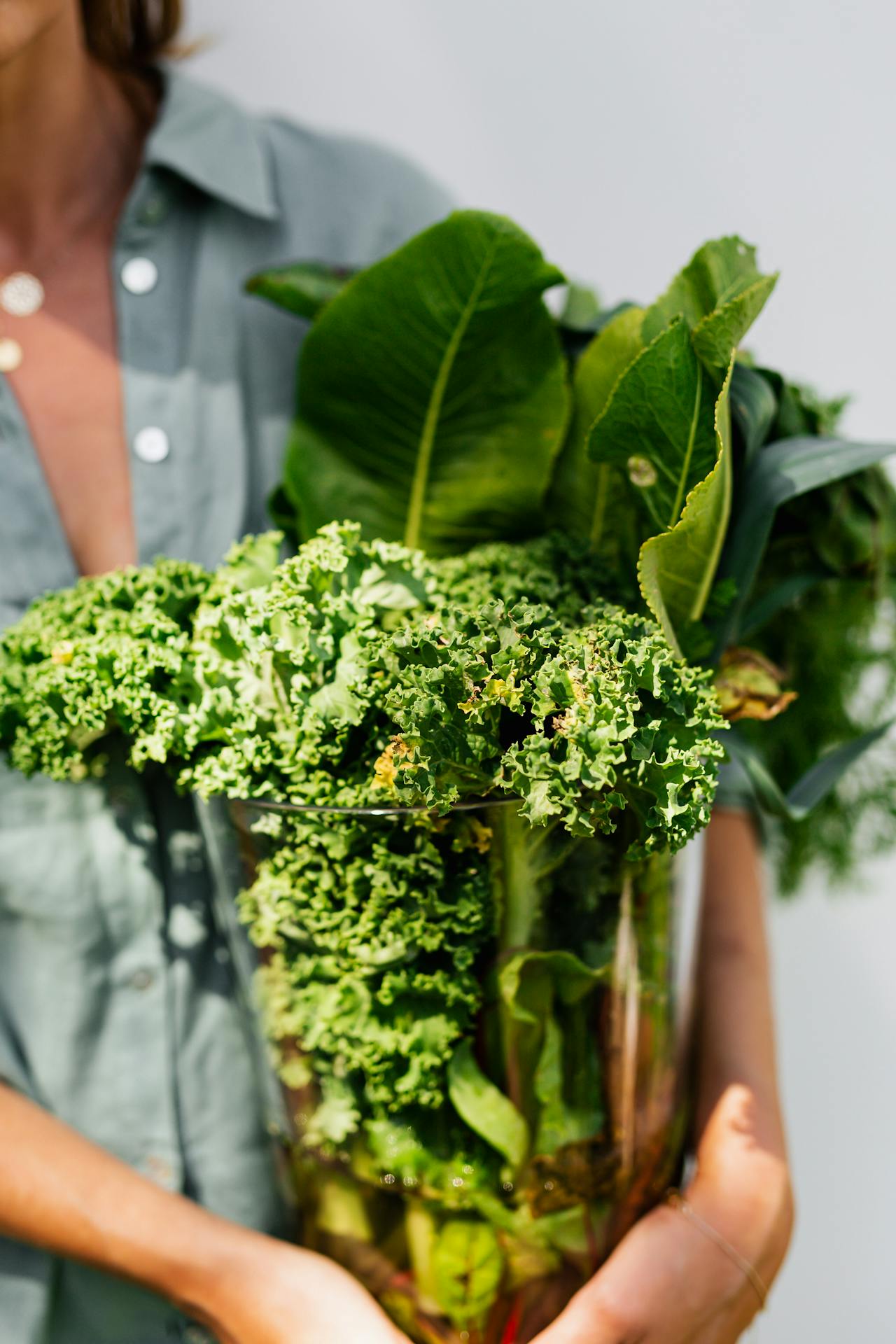Cruciferous vegetables, belonging to the Brassicaceae family, are a powerhouse of nutrients and have gained immense popularity for their health benefits. This blog post explores the numerous advantages of including these vegetables in your diet. Providing comprehensive information suitable for a global audience. We need to know about benefits of eating cruciferous vegetables.

Table of Contents
What Are the Benefits of Eating Cruciferous Vegetables?
Cruciferous vegetables include a variety of commonly consumed vegetables such as broccoli, cauliflower, cabbage, Brussels sprouts, kale, and bok choy. These vegetables are known for their distinctive four-petal flowers, resembling a cross, hence the name “cruciferous.” We need to know about benefits of eating cruciferous vegetables.
Nutritional Profile of Cruciferous Vegetables
Cruciferous vegetables are rich in vitamins, minerals, and antioxidants. Here’s a detailed look at their nutritional content:
| Vegetable | Vitamin C (mg per 100g) | Vitamin K (mcg per 100g) | Folate (mcg per 100g) | Fiber (g per 100g) |
| Broccoli | 89 | 101 | 63 | 2.6 |
| Cauliflower | 48 | 15 | 57 | 2.0 |
| Brussels Sprouts | 85 | 177 | 61 | 3.8 |
| Kale | 93 | 389 | 62 | 2.0 |
| Cabbage | 36 | 76 | 43 | 2.5 |
| Bok Choy | 45 | 45 | 66 | 1.0 |
Health Benefits of Eating Cruciferous Vegetables
1. Rich in Antioxidants
Cruciferous vegetables are high in antioxidants, such as vitamins C and E, and beta-carotene. These antioxidants help neutralize harmful free radicals in the body, reducing oxidative stress and lowering the risk of chronic diseases. We need to know about benefits of eating cruciferous vegetables.
2. Cancer Prevention
One of the most significant benefits of cruciferous vegetables is their potential role in cancer prevention. They contain glucosinolates, sulfur-containing compounds that have been shown to inhibit the growth of cancer cells. Studies suggest that regular consumption of these vegetables may reduce the risk of cancers such as lung, colon, and breast cancer. We need to know about benefits of eating cruciferous vegetables.
3. Supports Heart Health
The fiber, potassium, and antioxidants in cruciferous vegetables contribute to heart health. Fiber helps reduce cholesterol levels, while potassium aids in maintaining healthy blood pressure. Additionally, the anti-inflammatory properties of these vegetables can help prevent cardiovascular diseases. We need to know about benefits of eating cruciferous vegetables.
4. Promotes Digestive Health
High in dietary fiber, cruciferous vegetables promote a healthy digestive system. Fiber aids in bowel regularity, preventing constipation and promoting a healthy gut microbiome. We need to know about benefits of eating cruciferous vegetables.
5. Boosts Immune System
These vegetables are packed with vitamins and minerals that boost the immune system. Vitamin C, in particular, enhances the body’s ability to fight infections and accelerates wound healing. We need to know about benefits of eating cruciferous vegetables.
6. Anti-Inflammatory Properties
The phytochemicals in cruciferous vegetables possess anti-inflammatory properties, which can help manage and reduce the risk of chronic inflammatory conditions such as arthritis. We need to know about benefits of eating cruciferous vegetables.
7. Enhances Detoxification Processes
Cruciferous vegetables play a vital role in detoxification processes. They contain compounds like sulforaphane and indole-3-carbinol that support the liver’s ability to detoxify harmful substances. These compounds activate detoxification enzymes, which help eliminate toxins from the body more efficiently. We need to know about benefits of eating cruciferous vegetables.
8. Supports Weight Management
Due to their high fiber content and low-calorie nature, cruciferous vegetables are excellent for weight management. Fiber increases feelings of fullness, which can reduce overall calorie intake. Moreover, the low energy density of these vegetables allows for substantial consumption without significant calorie intake. We need to know about benefits of eating cruciferous vegetables.
9. Bone Health
Cruciferous vegetables like kale and broccoli are rich in calcium and vitamin K, both crucial for bone health. Calcium is necessary for maintaining bone structure and function, while vitamin K is essential for bone metabolism and helps prevent osteoporosis. We need to know about benefits of eating cruciferous vegetables.
10. Skin Health
The high levels of antioxidants and vitamins in cruciferous vegetables contribute to healthy skin. Vitamin C is vital for collagen production, which helps maintain skin elasticity and firmness. The antioxidants help protect the skin from damage caused by free radicals, reducing signs of aging. We need to know about benefits of eating cruciferous vegetables.
11. Eye Health
Vegetables such as kale and broccoli are rich in beta-carotene, lutein, and zeaxanthin, which are essential for eye health. These compounds help protect the eyes from oxidative stress and reduce the risk of age-related macular degeneration and cataracts. We need to know about benefits of eating cruciferous vegetables.
12. Blood Sugar Regulation
Cruciferous vegetables can help in regulating blood sugar levels. The fiber content slows down the absorption of sugar in the bloodstream, preventing spikes in blood glucose levels. This makes them an excellent dietary choice for individuals with diabetes or those at risk of developing the condition. We need to know about benefits of eating cruciferous vegetables.
13. Anti-Aging Benefits
The antioxidants and vitamins in cruciferous vegetables contribute to overall anti-aging benefits. By combating oxidative stress and reducing inflammation, these vegetables help maintain overall health and vitality, potentially extending lifespan and improving quality of life. We need to know about benefits of eating cruciferous vegetables. We need to know about benefits of eating cruciferous vegetables.
Culinary Uses and Recipes
Stir-Fried Bok Choy with Garlic
Ingredients:
- 4 cups bok choy, chopped
- 3 garlic cloves, minced
- 2 tablespoons soy sauce
- 1 tablespoon olive oil
- 1 teaspoon sesame oil
- Salt and pepper to taste
Instructions:
- Heat olive oil in a pan over medium heat.
- Add minced garlic and sauté until fragrant.
- Add bok choy and stir-fry for 3-4 minutes until tender.
- Add soy sauce and sesame oil, and cook for another 2 minutes.
- Season with salt and pepper to taste.
- Serve hot as a side dish.
Roasted Brussels Sprouts with Balsamic Glaze
Ingredients:
- 4 cups Brussels sprouts, halved
- 2 tablespoons olive oil
- 1/4 cup balsamic vinegar
- 1 tablespoon honey
- Salt and pepper to taste
Instructions:
- Preheat the oven to 400°F (200°C).
- Toss Brussels sprouts with olive oil, salt, and pepper.
- Spread them on a baking sheet in a single layer.
- Roast for 20-25 minutes until they are crispy and browned.
- While roasting, mix balsamic vinegar and honey in a small saucepan. Simmer until it thickens.
- Drizzle the balsamic glaze over the roasted Brussels sprouts before serving.
Kale and Quinoa Salad
Ingredients:
- 2 cups kale, chopped
- 1 cup cooked quinoa
- 1/2 cup cherry tomatoes, halved
- 1/4 cup red onion, sliced
- 1/4 cup feta cheese, crumbled
- 2 tablespoons olive oil
- 1 tablespoon lemon juice
- Salt and pepper to taste
Instructions:
- In a large bowl, combine kale, cooked quinoa, cherry tomatoes, red onion, and feta cheese.
- In a small bowl, whisk together olive oil, lemon juice, salt, and pepper.
- Pour the dressing over the salad and toss to combine.
- Serve chilled or at room temperature.

How to Incorporate Cruciferous Vegetables into Your Diet
Including cruciferous vegetables in your diet is easy and delicious. Here are some ideas:
- Salads: Add raw kale, cabbage, or broccoli to your salads for a nutrient boost.
- Stir-Fries: Incorporate bok choy, broccoli, and Brussels sprouts into your stir-fries.
- Roasted: Roast cauliflower and Brussels sprouts with a drizzle of olive oil and your favorite spices.
- Soups and Stews: Add chopped cabbage and kale to soups and stews for added nutrition.
- Smoothies: Blend kale or spinach into your morning smoothies for an extra dose of vitamins and minerals.
We need to know about benefits of eating cruciferous vegetables.
Environmental Benefits of Growing Cruciferous Vegetables
Sustainable Farming Practices
Cruciferous vegetables are often grown using sustainable farming practices. These practices include crop rotation, organic farming, and reduced pesticide use. By growing these vegetables sustainably, farmers can improve soil health, reduce environmental impact, and promote biodiversity. We need to know about benefits of eating cruciferous vegetables.
Soil Health and Crop Rotation
Growing cruciferous vegetables can benefit soil health through crop rotation. These vegetables help break pest and disease cycles, reducing the need for chemical treatments. Their deep root systems also help improve soil structure and increase the availability of nutrients for subsequent crops.
Reduced Pesticide Use
Cruciferous vegetables have natural pest-repelling properties, which can reduce the need for chemical pesticides. Compounds like glucosinolates can deter pests and protect crops naturally. This reduction in pesticide use benefits the environment by decreasing chemical runoff and preserving beneficial insects.
Lower Carbon Footprint
Locally grown cruciferous vegetables have a lower carbon footprint compared to those transported over long distances. By choosing locally sourced vegetables, consumers can reduce greenhouse gas emissions associated with transportation and support local farmers. We need to know about benefits of eating cruciferous vegetables.
Cultural and Culinary Significance
Global Cuisine
Cruciferous vegetables play a significant role in cuisines around the world. From Asian stir-fries and European stews to Middle Eastern salads and American side dishes, these vegetables are versatile and adaptable to various cooking styles.
Traditional Dishes
Many cultures have traditional dishes that highlight cruciferous vegetables. For example, kimchi, a staple in Korean cuisine, is made from fermented cabbage. In Italy, broccoli rabe is commonly used in pasta dishes, while in the United States, collard greens are a traditional Southern side dish.
Culinary Innovation
Chefs and home cooks alike continue to experiment with cruciferous vegetables, creating innovative dishes that highlight their unique flavors and textures. From cauliflower pizza crusts to kale chips, these vegetables are finding new and exciting ways to be enjoyed.
Tips for Selecting and Storing Cruciferous Vegetables
Selecting Fresh Vegetables
- Broccoli: Choose broccoli with tight, green florets and firm stalks. Avoid any yellowing or wilting.
- Cauliflower: Look for creamy white heads with compact florets. The leaves should be fresh and green.
- Cabbage: Select cabbage that feels heavy for its size with crisp, vibrant leaves.
- Brussels Sprouts: Pick Brussels sprouts that are firm, bright green, and free from blemishes.
- Kale: Choose kale with dark green, crisp leaves. Avoid any signs of yellowing or wilting.
- Bok Choy: Look for bok choy with fresh, green leaves and firm, white stems.
Storing Cruciferous Vegetables
- Refrigeration: Store cruciferous vegetables in the refrigerator’s crisper drawer. Keep them in perforated plastic bags to maintain humidity and freshness.
- Freezing: For longer storage, cruciferous vegetables can be blanched and frozen. Blanching helps preserve their color, flavor, and nutritional value.
- Root Cellar: Cabbage can be stored in a cool, dark place like a root cellar for several months.

Potential Drawbacks and Considerations
Goitrogens and Thyroid Health
Cruciferous vegetables contain goitrogens, compounds that can interfere with thyroid function. While this is generally not a concern for most people, those with thyroid conditions should moderate their intake and ensure they are getting enough iodine in their diet. We need to know about benefits of eating cruciferous vegetables.
Digestive Issues
The high fiber content in cruciferous vegetables can cause gas and bloating in some individuals, particularly if they are not accustomed to a high-fiber diet. To minimize discomfort, it is advisable to introduce these vegetables gradually and drink plenty of water.
Cooking Methods
Certain cooking methods can help reduce potential digestive issues and enhance nutrient absorption. Steaming and lightly sautéing cruciferous vegetables can make them easier to digest while preserving their nutritional benefits.
Scientific Research and Studies
Cancer Prevention Studies
Numerous studies have investigated the cancer-preventive properties of cruciferous vegetables. Research has shown that compounds like sulforaphane and indole-3-carbinol can inhibit the growth of cancer cells and induce apoptosis (cell death) in various cancer types, including breast, prostate, and colon cancer.
Heart Health Research
Studies have demonstrated that regular consumption of cruciferous vegetables can improve cardiovascular health. The high fiber content helps lower cholesterol levels, while antioxidants and anti-inflammatory compounds reduce the risk of heart disease.
Immune System Support
Research indicates that the vitamins and minerals found in cruciferous vegetables, particularly vitamin C, can enhance immune function. These nutrients support the production and activity of white blood cells, which are crucial for fighting infections. We need to know about benefits of eating cruciferous vegetables.
FAQs about Cruciferous Vegetables
1. Are there any side effects of eating cruciferous vegetables?
In general, cruciferous vegetables are safe to eat and highly beneficial. However, consuming them in very large quantities can lead to gas and bloating due to their high fiber content. People with thyroid conditions should also consult their doctor, as these vegetables can interfere with thyroid function when eaten in excessive amounts. We need to know about benefits of eating cruciferous vegetables.
2. Can cruciferous vegetables be eaten raw?
Yes, many cruciferous vegetables can be eaten raw. For example, broccoli, cauliflower, kale, and cabbage are commonly enjoyed raw in salads and slaws. Eating them raw preserves their vitamin content, particularly vitamin C.
3. How should cruciferous vegetables be stored?
To keep cruciferous vegetables fresh, store them in the refrigerator. They should be kept in the crisper drawer or in perforated plastic bags to maintain humidity. Most of these vegetables can be stored for about a week. We need to know about benefits of eating cruciferous vegetables.
4. Can cooking cruciferous vegetables reduce their nutritional value?
Cooking cruciferous vegetables can lead to a reduction in some nutrients, particularly water-soluble vitamins like vitamin C. However, cooking can also increase the availability of other beneficial compounds, such as indole. Steaming or lightly sautéing is recommended to preserve the most nutrients.
5. How much cruciferous vegetables should I eat daily?
It’s generally recommended to include at least 2-3 cups of vegetables in your daily diet, with a portion of these being cruciferous vegetables. Variety is key, so try to include a mix of different types to reap the full range of benefits.
6. Can cruciferous vegetables help with detoxification?
Yes, cruciferous vegetables support detoxification processes in the body. They contain compounds that enhance the liver’s ability to detoxify harmful substances, helping to cleanse the body more effectively.
7. Are cruciferous vegetables suitable for people with thyroid conditions?
People with thyroid conditions, particularly hypothyroidism, should consume cruciferous vegetables in moderation. These vegetables contain goitrogens, which can interfere with thyroid function. Cooking can reduce goitrogenic compounds, making them safer for those with thyroid issues. We need to know about benefits of eating cruciferous vegetables.
8. What is the best way to cook cruciferous vegetables to retain nutrients?
Steaming is one of the best ways to cook cruciferous vegetables to retain their nutrients. This method preserves water-soluble vitamins and antioxidants. Light sautéing and roasting are also good methods that can enhance flavor while maintaining nutritional value.
9. Are there any specific times of the year when cruciferous vegetables are best consumed?
Cruciferous vegetables are available year-round, but they tend to be at their peak during cooler seasons. For example, Brussels sprouts and kale are often sweeter and more flavorful when harvested after a frost.
10. How do cruciferous vegetables compare to other vegetable families in terms of health benefits?
Cruciferous vegetables stand out due to their unique compounds, such as glucosinolates, which offer specific health benefits like cancer prevention and detoxification. While all vegetables provide health benefits, cruciferous vegetables are particularly noted for their antioxidant, anti-inflammatory, and anti-cancer properties. We need to know about benefits of eating cruciferous vegetables.
People also search: Green Leafy Vegetables in Summer: The Ultimate Guide to Staying Healthy and Hydrated 2024
Conclusion
Cruciferous vegetables are a nutritional powerhouse with numerous health benefits. From cancer prevention to heart health and digestive support, these vegetables play a crucial role in a balanced diet. Incorporating them into your meals can be easy and delicious, providing a versatile and flavorful addition to any dish. Make cruciferous vegetables a regular part of your diet to enjoy their numerous health benefits and support your overall well-being.

Leave a Reply